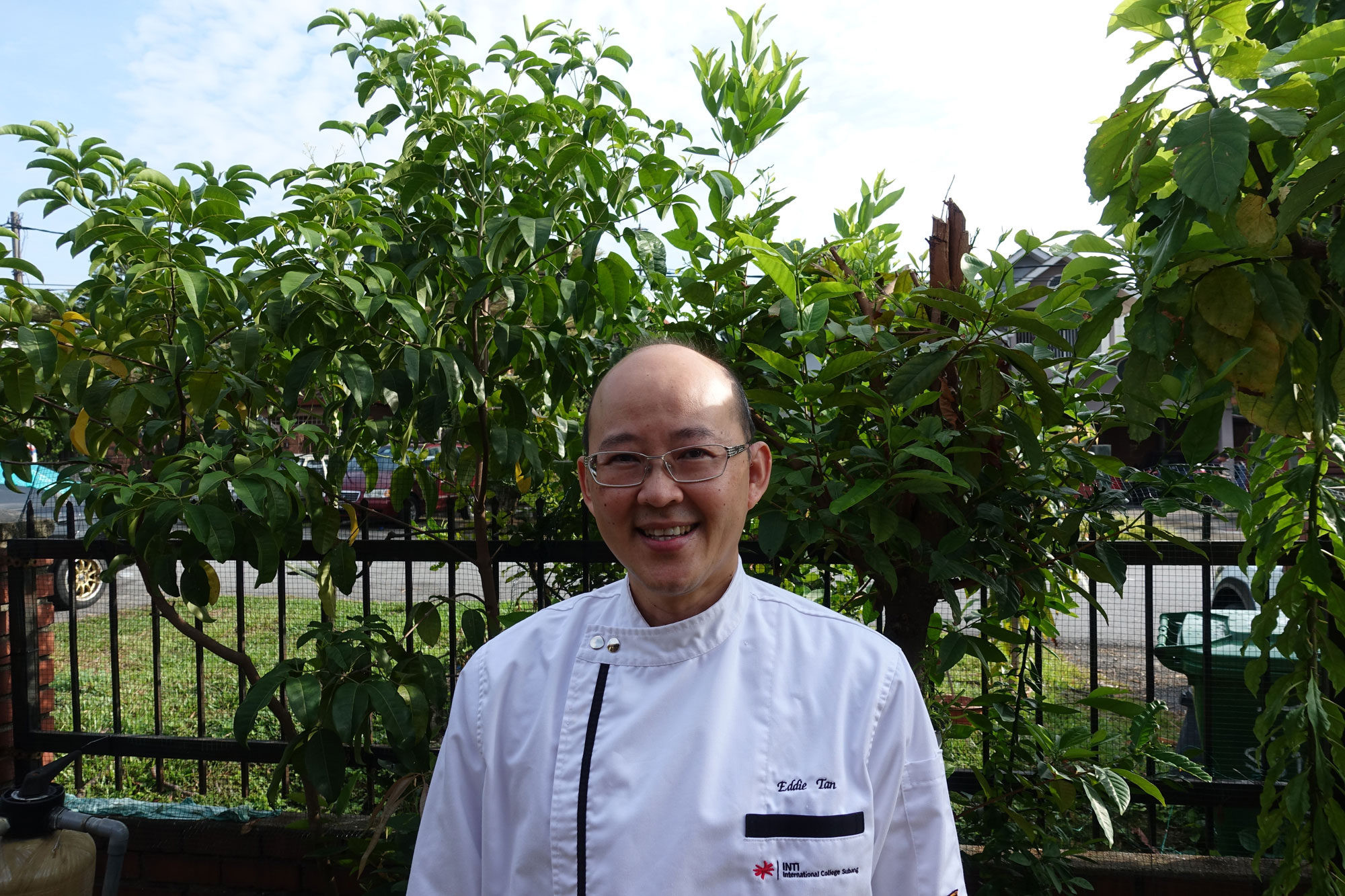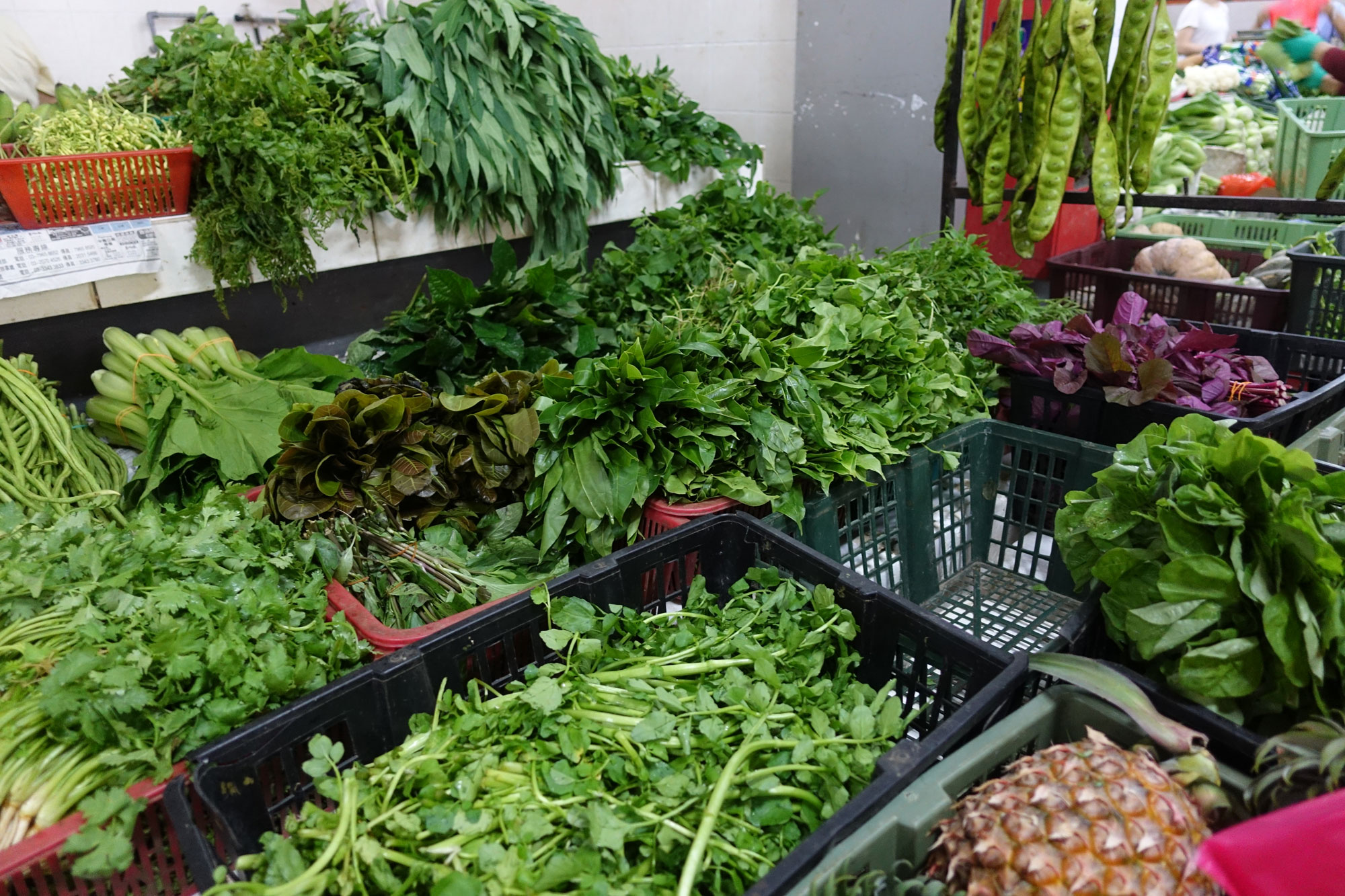As Malaysians tighten their belts due to these worrying times, Tan Kean Buan, or also known as Chef Eddie, shares some insights into alternative, cheaper and accessible ingredients everyone can include into their day-to-day cooking using native or naturalised edible greens traditionally used for ulam.
Kean Buan with another one of his home grown ulam, the daun salam, or also known as the Indonesian bay leaf.
A senior lecturer and chef at INTI International College Subang’s (INTI) School of Hospitality, Kean Buan defines ulam under the Malaysian context as “naturalised or native edible fresh leaves, herbs, vegetables, or fruits that are often served raw or lightly cooked and are typically found in Malay cuisines”. Understanding the financial worries most Malaysians are currently experiencing due to the pandemic, Kean Buan listed several ulam ingredients Malaysians could use as cheaper alternatives to everyday ingredients.
Tenggek burung and kale
Tenggek burung, or Melicope ptelefolia, is a type of plant that belongs to the Rutaceae family (the rue family of flowering plants) and can be commonly found growing across the wild in Malaysia. Its name tenggek, which means “to perch on”, is believed to have derived from smaller-sized birds such as hummingbirds or magpies, who tend to perch on the branches of these trees when collecting nectar or building their nests.
The passionate chef-lecturer explained that the flavour of the tenggek burung leaves is naturally a little more bitter and resembles the taste of kailan or kale.
“In Malay cuisines, its leaves are commonly served with rice and sambal belacan or sambal udang kering (dried shrimp sambal) and is typically consumed raw or dipped in the sambal,” added Kean Buan, who has nearly 20 years of local and international culinary experience under his belt.
The enthusiastic individual continued, “Due to having similar taste properties, it can easily be an alternative to kailan or kale and if cooked, is most suited for moist methods of cooking such as braising.”
Daum Selom and parsley
The over-a-decade-old lecturer also shared that the daun selom, or water parsley, could be an alternative to the Italian parsley in meals since it has a similar mildly bitter and tangy taste when eaten raw or cooked.
“Daun selom is often used by many as a condiment in dishes such as kerabu, laksa Kedah or even urap-urap, which is a salad dish consisting of steamed vegetables and seasoning. Some have also used daun selom as an ingredient to make kimchi!” said Kean Buan.
He added, “Just like Italian parsley, daun selom also adds a zesty flavour to dishes such as soups, curries, sauce-based dishes, or grilled or roasted poultry too.”
The Taiping born native, who is also currently pursuing his Master’s degree in ulam’s nutritional benefits and ethnic history, shares that nutritionally the daun selom shares similar benefits to lettuce since it mostly consists of water from growing along river streams, swamps or on the edge of ponds.
Many naturalised and edible ulam can be found in markets around Malaysia and typically costs RM2 per stalk.
Belimbing buluh and cherry tomatoes
“The belimbing buluh, also known as belimbing asam or Averrhoa bilimbi in its scientific term, is a small tropical tree native to Malaysia that bears leaves similar to those of gooseberries and whose fruit is elongated and green on the outside,” explained the individual of Baba Nyonya descent.
He added that it is a viable substitute for cherry tomatoes or tamarind since its fruit gives off a sour or acidic flavouring to food, and can be eaten raw, pickled, lightly blanched, boiled, or dipped in dressing.
“If you are willing to try something different and are adventurous, the belimbing buluh can also be made into a rather sweet jam when the fruit is ripened!” shared the 50-year-old father of two.
When asked about the accessibility and affordability of ulam, Kean Buan adds that there are over 100 different varieties of edible ulam which can be found either in most of our backyards, pasar tani (farmer’s market) or gardens and it usually costs about RM2 per stalk.
“Since many of us are feeling the pinch due to the current economy and are being more mindful of our spending, ulam could be affordable and delicious alternatives we could include into our daily cooking without having to compromise our health,” ended the bubbly chef.

